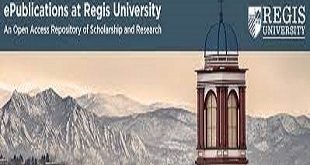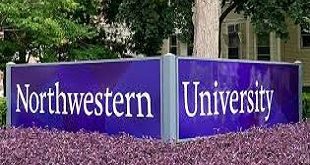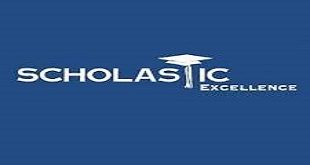How would you pay for your MS from the US?
In the United States, earning a Master’s degree (MS) can be a significant financial commitment, but there are a number of ways to pay for your education. Here are a few normal techniques:
Individual Reserve funds: Assuming that you have individual reserve funds, you can utilize them to cover part or the entirety of your educational cost and everyday costs. This choice is clear, however it may not be adequate to take care of the whole expense.
Grants and Cooperations: Graduate students can apply for scholarships and fellowships from a variety of private and public institutions based on academic merit, leadership, or specific criteria related to your field of study. To lessen the financial burden, investigate these opportunities and apply for them.
Assistantships: A few alumni programs offer educating or research assistantships, where you work for the college in return for a payment and in some cases an educational cost waiver. This can assist with counterbalancing the expense of your schooling.
Understudy Loans: Government and confidential understudy loans are normal choices for supporting training. Make certain to comprehend the terms, financing costs, and reimbursement choices prior to taking out credits. Government advances frequently have better terms and insurances.
Temporary Work: While examining, you might consider temporary work to assist with covering everyday costs. Notwithstanding, offsetting work responsibilities with your scholastic responsibilities is significant.
Prior to settling on any choices, cautiously research the expenses related with your picked program, investigate expected wellsprings of subsidizing, and think about your drawn out monetary circumstance. If you want personalized guidance and information about your options, it’s best to talk to the financial aid office at your potential university.
For what reason is it fundamental for an understudy to do co-curricular exercises?
Expertise Advancement: Co-curricular exercises give valuable open doors to understudies to foster a great many abilities, including initiative, cooperation, correspondence, using time effectively, critical thinking, and decisive reasoning. These abilities are fundamental for progress in both scholar and expert settings.
Balanced Improvement: Support in co-curricular exercises helps in the balanced improvement of understudies. It permits them to investigate their inclinations and gifts outside the study hall, cultivating a more exhaustive range of abilities.
Improvements in Academic Performance: Research has shown that understudies who are engaged with co-curricular exercises frequently perform better scholastically. Commitment to these exercises can further develop focus, using time effectively, and the capacity to deal with different obligations.
Social and Profound Development: Co-curricular exercises give a stage to understudies to cooperate with their friends in a non-scholastic setting. This social connection helps in the advancement of interactive abilities, the capacity to appreciate anyone on a profound level, and the capacity to work with different gatherings.
Well-being and Health: Proactive tasks, like games or outside exercises, are much of the time part of co-curricular projects. Participating in proactive tasks advances a solid way of life, diminishes pressure, and adds to in general prosperity.
Character Building: Challenges and opportunities to overcome obstacles are frequently present in co-curricular activities. Confronting these difficulties helps in building versatility, assurance, and a feeling of obligation. It additionally advances values like discipline, collaboration, and sportsmanship.
Profession Investigation: Co-curricular exercises permit understudies to investigate and find their inclinations and interests. This investigation can be instrumental in assisting understudies with arriving at additional educated conclusions about their future profession ways.
Organizing Open doors: Numerous co-curricular exercises include association with experts, graduated class, and specialists in different fields. Students can benefit from the opportunities for networking that this provides for their future careers.
Cultural sensitivity: Exercises connected with expressions, music, show, and far-reaching developments assist understudies with valuing variety and foster social mindfulness. Openness to alternate points of view and encounters adds to a more liberal and internationally mindful mentality.
Self-Discovery: Co-curricular exercises give a space to understudies to investigate and comprehend themselves better. They might find stowed away abilities, interests, or interests that can shape their own and proficient lives.
Is it great to be exhausted in some cases educational?
While fatigue is by and large not considered ideal, there are circumstances in which it tends to be instructive or even helpful. Understanding the circumstances in which boredom may be beneficial is essential, as is the ability to differentiate between the various types of boredom:
Mind Meandering and Inventiveness: Research proposes that when individuals are exhausted, their brains might meander. This meandering can prompt imaginative reasoning and critical thinking. In snapshots of weariness, people could investigate novel thoughts or make associations between apparently irrelevant ideas.
Excitement for Interest: A little bit of boredom can make you curious. Students or individuals may be motivated to seek out more challenging and engaging materials or activities when they find a task to be uninteresting. Along these lines, weariness can be an impetus for independent learning.
Building Flexibility: Encountering weariness infrequently can assist people with creating flexibility and persistence. Only one out of every odd second throughout everyday life or in schooling is loaded up with fervor, and figuring out how to explore times of fatigue can add to close to home flexibility.
Self-Reflection and Learning: Boredom can give people a chance to think about themselves. In snapshots of dormancy, individuals could consider their inclinations, objectives, and values, prompting a superior comprehension of themselves and their yearnings.
Enthusiasm for Commitment: Encountering fatigue can cause people to see the value in connecting with and animating exercises more. It appears differently in relation to snapshots of energy and can improve the satisfaction in exercises that catch consideration and interest.
All things considered, persistent or extraordinary weariness can have unfortunate results, like withdrawal, diminished inspiration, and an adverse consequence on mental prosperity. It’s fundamental for find some kind of harmony and establish conditions that encourage commitment, interest, and significant growth opportunities. Teachers and people ought to investigate ways of making learning more intuitive, applicable, and agreeable to limit weariness and expand positive results
A little fatigue can be something to be thankful for. It allows your brain an opportunity to “meander indiscriminately.” However, in the event that it doesn’t coincidentally find something fascinating decently fast, it can turn out to be just a period killer. ( Naturally, wasting time is only acceptable when traveling.)
However, fatigue in a homeroom merits stressing over. It could imply that you’re such a long ways in front of the class that, all things considered, yawn, doodle, read ahead, even nap. That happens, and if the teacher notices, it can be awkward. You might need classes that are harder.
What are academic distributions?
The expression “scholarly dispersions” can have various implications relying upon the unique circumstance. The following are several understandings:
Grade Distributions:With regards to the scholarly world, especially at the college level, “scholastic dispersions” could allude to the dissemination of grades among understudies in a specific course or across a whole scholarly foundation. This circulation gives a factual outline of the grades procured by understudies, frequently introduced as a histogram or graph. It helps teachers, executives, and understudies comprehend the presentation of the understudy body regarding grades.
Probability Distributions in Academic Research:
In scholastic examination, particularly in fields like measurements, science, or financial aspects, “scholarly appropriations” could allude to likelihood circulations or factual dispersions used to demonstrate different peculiarities. These dispersions portray the probability of various results in a given arrangement of information. Normal models incorporate typical appropriation, binomial dispersion, and Poisson circulation. Scientists and scholastics utilize these circulations to examine and decipher information, make expectations, and reach determinations.
Without a more unambiguous setting, it’s trying to pinpoint the specific importance of “scholarly disseminations.” On the off chance that you have a particular setting at the top of the priority list, giving more subtleties could assist me with giving a more exact and important clarification.
How can one send a composition to Educational?
Most large youngsters’ distributers take entries through specialists, not creators. This implies creators need to track down a specialist to address them. This can be challenging for new creators. Decent specialists bring in their cash through bonuses on the books they sell. In the event that they don’t sell a book, they bring in no cash. Subsequently, they’re exceptionally finicky about the books they consent to address.
When you have a specialist, however, that specialist will do a ton for you, including presenting your book to distributers and arranging the agreement assuming that it sells. A few distributers acknowledge unagented entries. On the off chance that a distributer acknowledges entries straightforwardly from creators, you can present your own work. You ought to go to the distributer’s site to look into current accommodation headings. Accommodation arrangements are dependent on future developments, so you ought to go straightforwardly to the distributer’s site and search for ebb and flow accommodation data.
Choose the desired publication:
Research and distinguish instructive distributions or diaries that line up with the topic or focal point of your piece. Search for diaries that distribute work like yours.
Guidelines for Review Submissions:
Visit the authority site of the distribution and search for a segment on accommodation rules. This part will give subtleties on the kind of work they acknowledge, favored designs, word count, reference styles, and some other explicit prerequisites.
Set up Your Creation:
Design your piece as indicated by the accommodation rules. Guarantee that your work sticks to any predefined style or reference prerequisites. Edit your creation to take out blunders.


